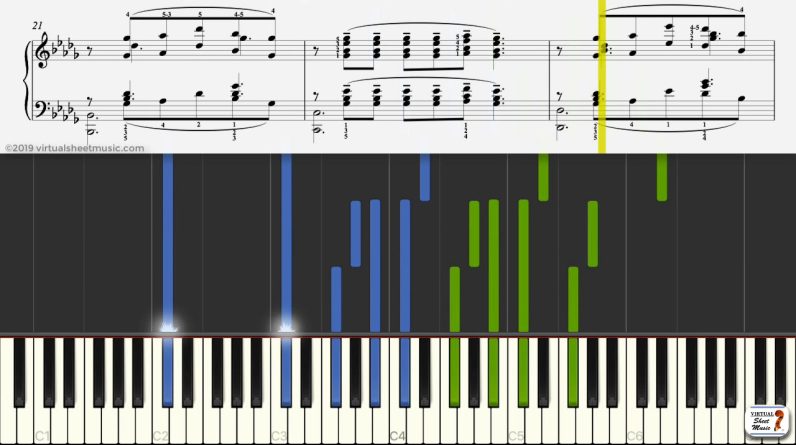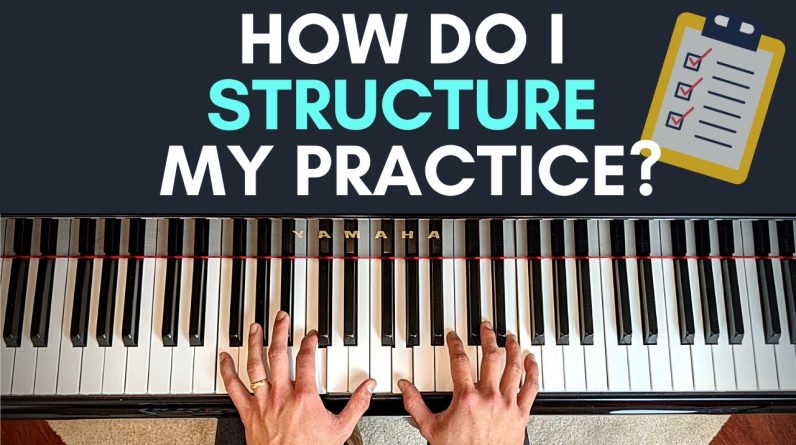In the video “7 Pitfalls Piano Beginners Often Fall Into” by Learn Piano with Jazer Lee, you will be introduced to the common pitfalls that many piano beginners encounter. This informative video offers advice and solutions for each pitfall to help beginners overcome these challenges and make progress in their piano playing.
Additionally, you will also find helpful tips on how to stay focused, consistent, and motivated in your piano practice. If you feel like you’re stuck in a rut or not making progress in your piano playing, this video provides valuable insights and techniques to help you overcome these pitfalls and improve your skills.
Pitfall 1: Gambling
Playing hands together without mastering hands separately
One of the most common mistakes beginners make when learning how to play the piano is jumping into playing hands together before mastering hands separately. This can lead to a lack of precision and accuracy in playing, as well as difficulties in coordination.
When you practice piano, it is important to start by practicing each hand separately. This allows you to focus on the specific movements and techniques required for each hand, without the added complexity of coordinating both hands together. By practicing hands separately, you can develop a solid foundation and establish muscle memory for each hand.
Importance of starting with hands separately
Starting with hands separately is crucial because it allows you to fully understand and internalize the music before attempting to put both hands together. Each hand has its own unique set of challenges, and by practicing them separately, you can address these challenges more effectively.
Practicing hands separately also helps you develop a better sense of rhythm and timing. You can focus on playing each hand precisely and in time with a steady beat. This lays the groundwork for playing hands together with better coordination and musicality.
Tips for practicing hands separately
To practice hands separately effectively, try the following tips:
- Start with the hand that is more challenging for you. This could be either the right or left hand, depending on your individual strengths and weaknesses.
- Begin by playing the chosen hand very slowly and with careful attention to detail. Focus on playing each note accurately and in time with a steady beat.
- Gradually increase the tempo as you become more comfortable and confident with each hand. Remember to always maintain accuracy and control, even at faster speeds.
- Once you feel comfortable with each hand separately, begin to practice putting them together. Start by playing both hands slowly and gradually increase the tempo over time.
Remember, practicing hands separately is an essential step in the learning process and should not be skipped. By mastering each hand individually, you will set yourself up for success when you eventually play hands together.
Pitfall 2: Playing Too Fast Too Soon
Emphasizing the importance of practicing slowly and mindfully
Playing too fast too soon is another common pitfall that many beginners fall into. It’s natural to want to play a piece at full speed right away, especially if you are inspired by a recording or performance. However, rushing through the learning process can hinder your progress and lead to sloppy technique and mistakes.
To make steady progress on the piano, it is important to practice slowly and mindfully. By taking the time to focus on each note and movement, you can ensure accuracy and develop a strong foundation for playing faster in the future.
Reasons why playing too fast can hinder progress
Playing too fast too soon can hinder your progress in several ways. Firstly, it can lead to mistakes and inaccuracies in your playing. When you rush through a piece, you may not have enough time to fully process each note and movement, resulting in missed or incorrect notes.
Secondly, playing too fast can lead to sloppy technique. When your fingers are moving quickly, it can be tempting to sacrifice proper hand position and finger placement for speed. This can cause tension and strain in your hands, leading to discomfort and potentially injury over time.
Finally, playing too fast can hinder your ability to truly understand and interpret the music. Music is not just about hitting the right notes; it’s about expressing emotion and capturing the essence of the piece. By playing slowly and mindfully, you can truly connect with the music and bring it to life.
Tips for practicing at a slower tempo
To practice at a slower tempo effectively, consider the following tips:
- Begin by breaking the piece down into smaller sections or phrases. Focus on one section at a time and practice it slowly and carefully.
- Use a metronome to keep a steady beat and gradually increase the tempo as you become more comfortable with each section.
- Pay attention to your technique and hand position while practicing slowly. Ensure that your fingers are playing with the proper technique and that you are maintaining a relaxed and comfortable hand position.
- Practice with a focus on precision and accuracy. Listen carefully to each note and strive for clarity and cleanliness in your playing.
Remember, progress on the piano takes time and patience. By practicing slowly and mindfully, you will build a strong foundation and set yourself up for success in the long run.
Pitfall 3: Overusing the Pedal
Suggesting limited use of the pedal during practice
The pedal is a wonderful tool that can enhance the sound and expression of your playing. However, overusing the pedal can become a pitfall for beginners. When you rely too heavily on the pedal, it can mask potential weaknesses in your playing and prevent you from developing proper technique and control.
During practice sessions, it is recommended to limit the use of the pedal. By doing so, you can expose your weaker areas and work on improving them.
Why overusing the pedal can mask weaknesses
When you use the pedal excessively, it creates a sustained and blended sound that can cover up any mistakes or inaccuracies in your playing. While this may sound pleasant, it can prevent you from identifying and addressing areas that need improvement.
Furthermore, overusing the pedal can hinder your ability to develop a strong sense of rhythm and articulation. The pedal can blur the individual notes and make it difficult to play with precision and clarity.
Tips for using the pedal in moderation
To use the pedal effectively and in moderation, consider the following tips:
- Practice sections of a piece without using the pedal at all. This will allow you to focus on playing each note cleanly and clearly. Pay attention to the natural decay of the sound and aim for a balanced and controlled sustain without relying on the pedal.
- Gradually introduce the pedal once you have a solid understanding of the piece and can play it accurately without the pedal. Start by using the pedal sparingly and gradually increase its use as you become more comfortable.
- Experiment with different pedal techniques, such as half-pedaling or selective pedaling, to achieve the desired sound while maintaining control and clarity in your playing.
- When using the pedal, listen carefully to the sound and make adjustments as needed. Be mindful of the balance between the sustained sound and the clarity of individual notes.
By using the pedal in moderation and with intention, you can enhance your playing without compromising your technique and musicality.
Pitfall 4: Ignoring Scales and Arpeggios
Emphasizing the importance of practicing scales and arpeggios
Scales and arpeggios may seem mundane, but they are essential for developing strong technique and musical understanding. While it can be tempting to focus solely on learning and playing pieces, neglecting scales and arpeggios can hinder your overall progress on the piano.
Benefits of practicing fundamental techniques
Practicing scales and arpeggios offers several benefits for piano beginners. Firstly, it helps develop finger dexterity and independence. By practicing scales and arpeggios, you train your fingers to move easily and quickly across the piano keys, improving your overall agility and speed.
Secondly, scales and arpeggios provide a foundation for understanding music theory, in particular key signatures. By learning and practicing scales and arpeggios, you familiarize yourself with the different keys and their corresponding scales, chords, and harmonies. This understanding will greatly aid your ability to sight-read and learn new pieces.
Finally, practicing scales and arpeggios helps improve your overall technique and control on the piano. It strengthens your hand muscles and promotes better coordination between your fingers. Additionally, scales and arpeggios can help improve your sense of rhythm and timing.
Tips for incorporating scales and arpeggios into practice routines
To incorporate scales and arpeggios into your practice routine, consider the following tips:
- Begin by learning and practicing major scales in all keys. Start with C major, as it contains no sharps or flats, and gradually work your way through the different keys.
- Practice scales and arpeggios in different rhythms and articulations. This will help improve your finger dexterity and control.
- Set specific goals and targets for your scale practice. Aim to play scales smoothly and evenly, with a consistent tempo and dynamic control.
- As you become more comfortable with major scales, start incorporating minor scales and arpeggios into your practice routine.
- Practice scales and arpeggios in different octaves and hand positions to improve your flexibility on the piano.
Remember, practicing scales and arpeggios may not always be the most exciting part of your practice session, but they are crucial for building a strong foundation and improving your overall piano skills.
Pitfall 5: Neglecting Sight Reading
Emphasizing the importance of developing sight-reading skills
Sight reading is the ability to read and play music at first sight, without prior knowledge or practice. While it may seem daunting at first, developing sight-reading skills is essential for becoming a well-rounded pianist.
How sight reading improves overall piano skills
Practicing sight reading offers several benefits for piano beginners. Firstly, it improves your reading abilities, allowing you to quickly decipher musical notation and translate it into sound without hesitation. This skill is crucial for learning new pieces efficiently and effectively.
Secondly, sight reading enhances your rhythm and timing. By constantly reading and playing unfamiliar music, you train your internal sense of rhythm and develop a better understanding of different time signatures and rhythmic patterns.
Finally, sight reading improves your overall musicality. It challenges you to make quick decisions regarding dynamics, articulations, and phrasing, enhancing your ability to interpret and express music.
Tips for practicing sight reading
To improve your sight-reading skills, consider the following tips:
- Start with simple pieces or exercises specifically designed for sight reading. These pieces typically contain straightforward rhythms and limited technical challenges, allowing you to focus on the reading aspect.
- Practice sight reading regularly, even if it’s just for a few minutes each day. Consistency is key when it comes to developing this skill.
- Use a metronome to help you maintain a steady beat and rhythm while sight reading. This will enhance your sense of pulse and timing.
- Gradually increase the difficulty level of the sight reading material as you become more comfortable and confident. Challenge yourself with different time signatures, key signatures, and musical styles.
- Don’t be afraid to make mistakes while sight reading. The goal is to read and play through the music without stopping or going back to correct errors. Over time, your ability to quickly recover from mistakes will improve.
Remember, sight reading is a skill that takes time and practice to develop. Be patient with yourself, and with consistent effort, you will see significant improvement in your ability to read and play music at first sight.
Pitfall 6: Not Practicing Enough
Emphasizing the need for regular and consistent practice
One of the biggest pitfalls that beginners often fall into is not practicing enough. Regular and consistent practice is key to making progress on the piano. Without dedicating enough time to practice, it can be difficult to develop and refine your skills.
Effects of inadequate practice on progress
Not practicing enough can have several negative effects on your progress as a pianist. Firstly, it can hinder your ability to learn and retain new information. Regular practice is crucial for transferring what you learn in each practice session into your long-term memory.
Secondly, inadequate practice can lead to a lack of muscle memory and finger strength. Playing the piano requires a certain level of physicality, and consistent practice helps build the necessary muscle strength and coordination.
Lastly, not practicing enough can hinder your ability to develop a sense of musicality and expression. Playing the piano is not just about hitting the right notes; it’s about conveying emotion and telling a story. Regular practice allows you to delve deeper into the music and explore different interpretations.
Tips for making practice a priority
To make practice a priority, consider the following tips:
- Set a consistent practice schedule and stick to it as much as possible. Treat practice as an appointment with yourself and make it a non-negotiable part of your routine.
- Break your practice sessions into smaller, more manageable chunks of time. It’s better to practice for shorter periods consistently than to cram in a long practice session once in a while.
- Set specific goals for each practice session. Aim to work on specific sections or techniques and track your progress over time.
- Stay motivated and inspired by listening to recordings or attending live performances. Surrounding yourself with music can help fuel your passion and desire to practice.
- Find ways to make practice enjoyable and fun. Experiment with different styles of music or incorporate creative exercises into your routine.
Remember, consistency is key when it comes to practice. Even if you can only dedicate a few minutes each day, the important thing is to make practicing the piano a regular part of your life.
Pitfall 7: Practicing Too Long Without Breaks
The importance of taking regular breaks during practice
While consistent practice is crucial for progress, practicing for long hours without breaks can be counterproductive. It’s important to give your mind and body time to rest and recharge in order to maintain focus and prevent fatigue.
Negative effects of practicing for long hours without breaks
Practicing for long hours without breaks can have several negative effects on your practice sessions and overall progress. Firstly, it can lead to decreased focus and concentration. Your mind can start to wander, and you may find it difficult to stay engaged in your practice.
Secondly, practicing for extended periods without breaks can result in physical tension and fatigue. Playing the piano requires fine motor skills, and these skills can become compromised if you don’t allow your muscles time to rest and recover.
Finally, overworking yourself can lead to burnout and decreased motivation. It’s important to strike a balance between practice and relaxation to maintain a healthy and sustainable practice routine.
Tips for effective practice sessions with breaks
To ensure that your practice sessions are effective and productive, consider the following tips:
- Break your practice time into smaller blocks, such as 25-30 minutes, and take a short break in between each block. Use this break to stretch, hydrate, or simply relax and clear your mind.
- Be mindful of your body and take breaks whenever you start to feel physical tension or fatigue. Listen to your body’s signals and respect its need for rest.
- Use your breaks to reflect on your practice and set goals for the next block. Take a moment to assess your progress and identify areas that need further attention.
- Incorporate mental breaks into your practice routine. Close your eyes, take a few deep breaths, and visualize the music before continuing to play. This can help you stay focused and present during your practice sessions.
- Experiment with different practice techniques that incorporate breaks, such as the Pomodoro Technique, which involves alternating focused work intervals with short breaks.
Remember, taking breaks during practice is not a sign of weakness or laziness. It is an essential part of maintaining focus and ensuring that your practice sessions are productive and effective.
Tips for Avoiding Distractions
In today’s digital age, distractions from social media and the internet can easily derail your practice sessions. It’s important to be mindful of these distractions and take steps to minimize their impact on your focus and productivity.
Social media platforms and internet browsing are notorious for their ability to consume large chunks of time without us even realizing it. It’s easy to get caught up in scrolling through endless feeds or getting lost in the depths of the internet, but these distractions can significantly hinder your progress on the piano.
Strategies for staying focused during practice
To stay focused during your practice sessions and avoid the distractions of social media and the internet, consider the following strategies:
- Designate specific practice times when you will turn off or put away your phone and other devices. Create a distraction-free zone for your practice sessions where you can fully immerse yourself in the music.
- Use apps or website blockers to limit access to social media sites and other distracting websites during your designated practice times. Set clear boundaries for yourself and stick to them.
- Set goals and objectives for each practice session to keep yourself focused and motivated. Having a clear purpose and direction can help prevent your mind from wandering.
- Practice in a designated practice space that is free from distractions. This could be a separate room, a corner of your home, or even a dedicated practice studio.
- Establish a routine and make practice a non-negotiable part of your daily schedule. By turning practice into a habit, you are less likely to be tempted by distractions.
Creating a conducive practice environment
In addition to minimizing distractions, creating a conducive practice environment can greatly enhance your focus and productivity. Consider the following tips for setting up your practice space:
- Ensure that your practice space is clean, organized, and free from clutter. A clutter-free environment can help promote clarity of mind and create a sense of calmness and focus.
- Make sure your piano or keyboard is in good condition and properly maintained. A well-maintained instrument will not only sound better but also provide you with a more enjoyable practice experience.
- Surround yourself with inspiration. Displaying motivational quotes, pictures of your favorite musicians, or other sources of inspiration in your practice space can help keep you motivated and focused.
- Experiment with different lighting and temperature settings to find what works best for you. Some people prefer bright, natural light, while others prefer softer, ambient lighting. Similarly, find a temperature that allows you to feel comfortable and relaxed.
- Eliminate any unnecessary distractions from your practice space. This could include removing clutter or keeping non-essential items out of sight to minimize visual distractions.
Creating a conducive practice environment and minimizing distractions can significantly improve your focus and productivity during practice sessions. By taking these steps, you can maximize your learning potential and make the most of your practice time.
Setting Realistic Practice Goals
Importance of setting achievable practice goals
Setting realistic and achievable practice goals is essential for maintaining motivation and making progress on the piano. Without clear goals, it can be challenging to stay focused and measure your progress accurately.
Realistic practice goals help you break down larger, long-term objectives into smaller, more manageable tasks. By setting achievable goals, you create a roadmap for your practice and provide yourself with a sense of direction and purpose.
Ways to measure progress and set goals
To measure your progress and set realistic goals, consider the following approaches:
- Break down larger pieces into smaller sections or phrases and set goals for mastering each section individually. This allows you to track your progress more effectively and ensures that you’re giving adequate attention to every part of the piece.
- Set specific technical goals, such as improving finger dexterity or developing better control over dynamics and articulation. By focusing on specific technical aspects, you can gradually build your skills and measure your progress objectively.
- Use a practice journal or log to record your practice sessions and track your improvement. Documenting your practice habits and achievements can provide you with a visual representation of your progress over time.
- Set both short-term and long-term goals to maintain a sense of motivation and urgency. Short-term goals could be learning a new piece within a specific timeframe or mastering a challenging section. Long-term goals could be performing in a recital or achieving a certain level of proficiency.
Tips for setting realistic practice goals
To set realistic practice goals, consider the following tips:
- Be specific and precise in your goal-setting. Instead of saying “I want to play better,” specify what aspect of your playing you want to improve and how you plan to achieve it.
- Prioritize your goals and focus on one or two at a time. Trying to tackle too many goals simultaneously can lead to overwhelm and hinder your progress.
- Be flexible and adjust your goals as needed. As you progress and develop, your goals may need to be modified or expanded to reflect your new skills and challenges.
- Celebrate your achievements and milestones along the way. Recognizing and rewarding your progress can help boost your motivation and build confidence in your abilities.
Setting realistic practice goals is essential for maintaining motivation, measuring progress, and achieving long-term success on the piano. By breaking down larger objectives into smaller, achievable tasks, you can stay focused and motivated throughout your practice journey.
Conclusion
In conclusion, piano beginners often encounter various pitfalls that can hinder their progress and prevent them from reaching their full potential. By recognizing and addressing these pitfalls, you can overcome these challenges and improve your skills on the piano.
The 7 common pitfalls discussed in this article include gambling, playing too fast too soon, overusing the pedal, ignoring scales and arpeggios, neglecting sight reading, not practicing enough, and practicing too long without breaks. Each of these pitfalls has its own set of consequences and solutions.
By practicing hands separately, starting slow, limiting pedal usage, incorporating scales and arpeggios, developing sight-reading skills, prioritizing regular practice, taking breaks, avoiding distractions, setting realistic goals, and creating a conducive practice environment, you can overcome these pitfalls and make significant progress on the piano.
Remember, learning the piano is a journey that requires dedication, patience, and consistent effort. By recognizing and overcoming these pitfalls, you are setting yourself up for success and ensuring a fulfilling and rewarding experience with the piano. Keep practicing, stay motivated, and enjoy the beautiful music you create!
- Pianoforall Review: By Current Pianoforall Student (2024) - January 16, 2024
- 7 Pitfalls Piano Beginners Face and Tips That Will Help - January 7, 2024
- Learn Clair de Lune Sheet Music by Debussy – Keyboard Practice Video - December 16, 2023
Contents
- 1 Pitfall 1: Gambling
- 2 Pitfall 2: Playing Too Fast Too Soon
- 3 Pitfall 3: Overusing the Pedal
- 4 Pitfall 4: Ignoring Scales and Arpeggios
- 5 Pitfall 5: Neglecting Sight Reading
- 6 Pitfall 6: Not Practicing Enough
- 7 Pitfall 7: Practicing Too Long Without Breaks
- 8 Tips for Avoiding Distractions
- 9 Setting Realistic Practice Goals
- 10 Conclusion







